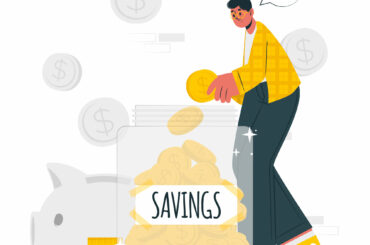Creating a budget is one of the most effective ways to manage your finances, achieve financial goals, and reduce financial stress. For Canadians, budgeting is particularly important due to the rising costs of living, varying tax rates across provinces, and fluctuating economic conditions. This guide provides a step-by-step approach to creating a budget that works for Canadians and helps you take control of your money.
Why Budgeting is Essential
Budgeting isn’t just about cutting costs; it’s about empowering yourself to make informed financial decisions. Here are some key benefits:
- Track Spending: Identify where your money is going and eliminate wasteful expenses.
- Save More: Allocate funds towards savings goals like buying a home or retirement.
- Stay Out of Debt: Avoid overspending and manage existing debts efficiently.
- Prepare for Emergencies: Build a safety net to handle unexpected expenses
Budgeting 101: How to Create a Budget That Works for Canadians
Creating a budget is one of the most effective ways to manage your finances, achieve financial goals, and reduce financial stress. For Canadians, budgeting is particularly important due to the rising costs of living, varying tax rates across provinces, and fluctuating economic conditions. This guide provides a step-by-step approach to creating a budget that works for Canadians and helps you take control of your money.
Why Budgeting is Essential for Canadians
Budgeting isn’t just about cutting costs; it’s about empowering yourself to make informed financial decisions. Here are some key benefits:
- Track Spending: Identify where your money is going and eliminate wasteful expenses.
- Save More: Allocate funds towards savings goals like buying a home or retirement.
- Stay Out of Debt: Avoid overspending and manage existing debts efficiently.
- Prepare for Emergencies: Build a safety net to handle unexpected expenses.
Step 1: Understand Your Financial Picture
Before you can create a budget, you need a clear understanding of your financial situation.
- Calculate Your Income: Include all sources of income, such as salaries, freelance work, rental income, and government benefits like the Canada Child Benefit (CCB). Make sure to calculate your after-tax income.
- List Your Expenses: Break your expenses into categories:
- Fixed Costs: Rent/mortgage, utilities, car payments.
- Variable Costs: Groceries, transportation, entertainment.
- Irregular Expenses: Annual insurance premiums, holiday gifts, or car maintenance.
- Assess Your Debt: Write down your outstanding debts, including credit cards, student loans, and lines of credit. Note the interest rates and minimum payments for each.
Step 2: Choose a Budgeting Method
Selecting a budgeting framework can simplify the process. Here are some popular options for Canadians:
- 50/30/20 Rule:
- 50% of your income goes towards necessities (housing, utilities, groceries).
- 30% is for wants (dining out, hobbies).
- 20% is allocated to savings and debt repayment.
- Zero-Based Budgeting: Every dollar of income is assigned a purpose, ensuring no money is left unaccounted for.
- Envelope System: Allocate cash into envelopes for specific expenses. This method is particularly useful for controlling discretionary spending.
- Pay Yourself First (Beginner-Friendly): If you’re new to budgeting, start by paying yourself first. Set up automatic transfers to allocate a portion of your income directly into savings or investment accounts (e.g., TFSAs, RRSPs) as soon as you get paid. This ensures you prioritize your financial goals before addressing discretionary expenses. It’s a simple and effective method to build the habit of saving without feeling the pinch.
My Tip: Start with the “Pay Yourself First” method. Set up automated transfers toward your goals, even if it’s a small amount (like $20, $50, or $100). This approach helps you build the habit. Once you’re comfortable, you can adjust the amount or switch to a different budgeting method.
Step 3: Optimize Your Budget
Once your budget is in place, take these additional steps to ensure it works for you:
- Cut Unnecessary Expenses: Review your spending habits and eliminate costs like unused subscriptions or frequent dining out.
- Plan for Seasonal Expenses: Canadians face unique expenses like higher utility bills in winter or holiday travel costs. Set aside funds for these ahead of time.
- Automate Savings: Set up automatic transfers to your savings account or Tax-Free Savings Account (TFSA) to ensure consistency.
- Negotiate Bills: Contact service providers to negotiate lower rates for internet, insurance, or cell phone plans.
Step 4: Use Tools to Simplify Budgeting
Budgeting doesn’t have to be complicated. Using tools can help you stay organized and track your progress easily:
- Google Sheets: A free and customizable option for budgeting. Create a spreadsheet to list your income, expenses, and savings goals. You can even find pre-made budget templates online to save time.
- Budgeting Apps: Try user-friendly apps like Monarch or YNAB (You Need a Budget) to track spending and automate calculations.
- Track Progress Regularly: Update your budget weekly or monthly to ensure you’re staying on track and making progress toward your goals.
By keeping your budgeting tools simple and accessible, you’re more likely to stick to the plan.
Step 5: Review and Adjust Regularly
Life evolves, and your budget should too. Review it monthly to adjust for shifts in income, expenses, or financial goals.
Common Budgeting Mistakes to Avoid
- Overcomplicating the Process: Keep your budget simple and easy to follow.
- Ignoring Irregular Expenses: Forgetting annual or semi-annual expenses can throw your budget off track.
- Failing to Adjust: Avoid sticking to an outdated budget when your circumstances change.
Conclusion
Creating a budget that works for Canadians is an essential step toward financial freedom. By understanding your financial situation, choosing the right budgeting method, and leveraging tools and resources, you can create a sustainable plan that aligns with your goals. Remember, a successful budget isn’t set in stone, it’s a dynamic tool that evolves with your life.
Start small, stay consistent, and watch your financial confidence grow.





